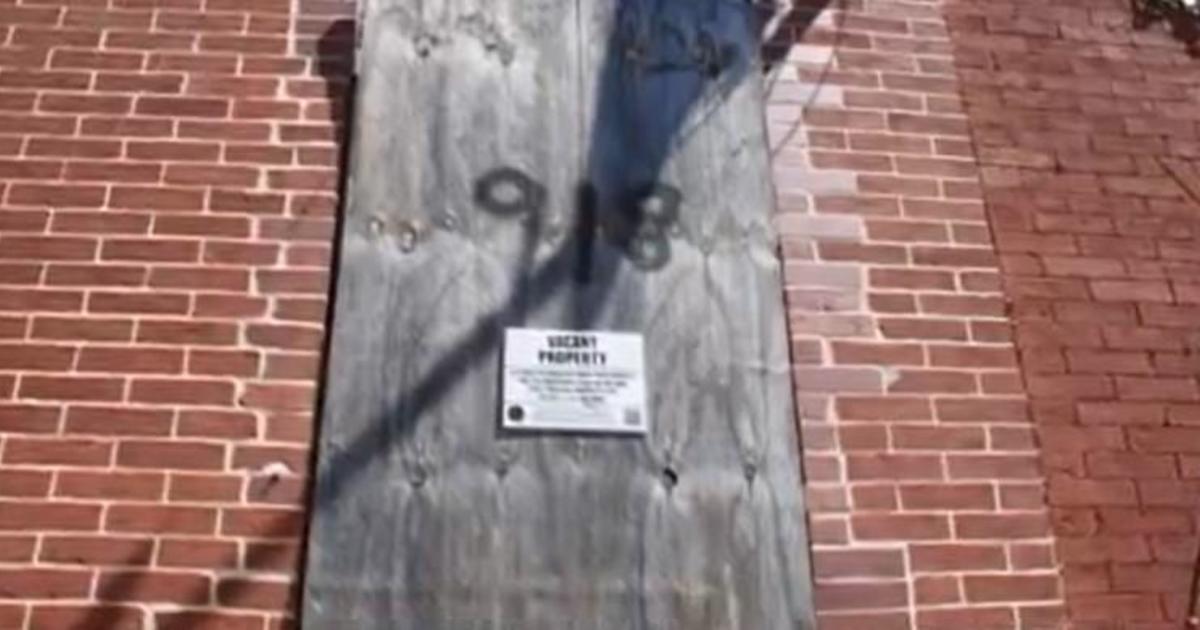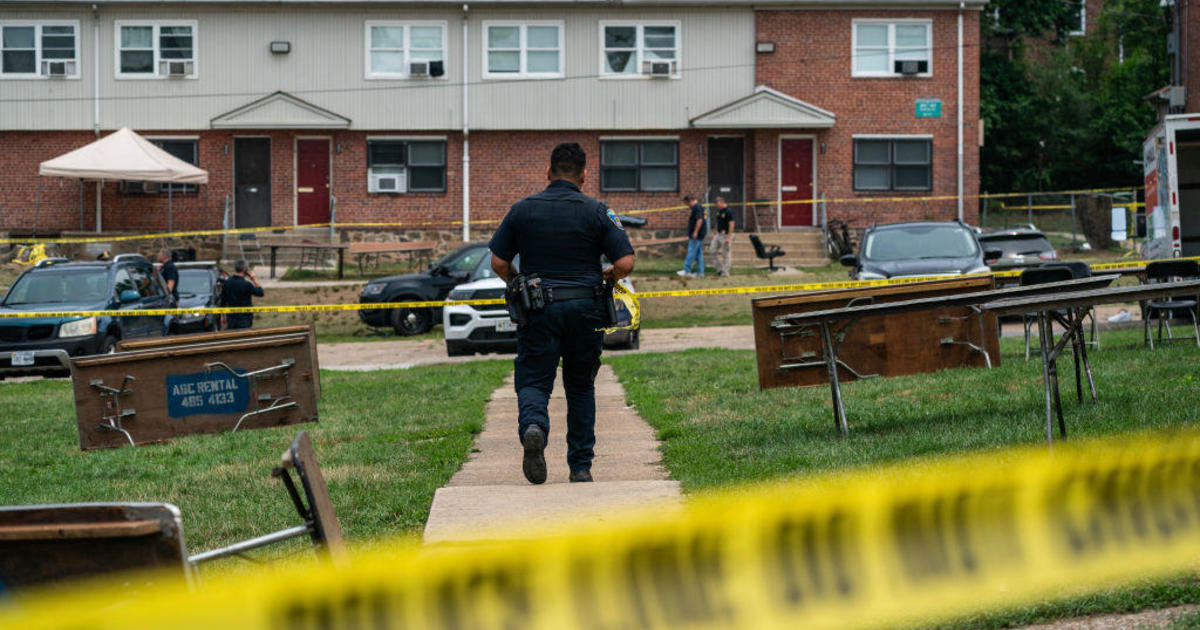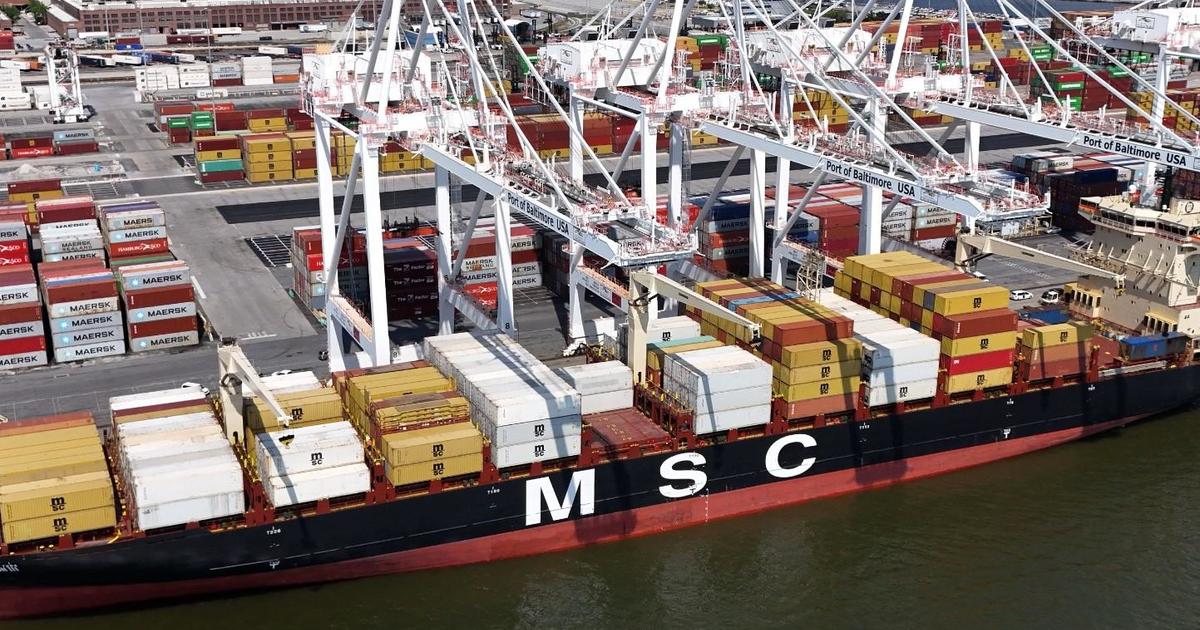WJZ Investigates: Dangerous chemicals transported through Maryland with no public notice
BALTIMORE -- Volatile substances are being transported on railroads through densely populated neighborhoods across Maryland that cannot be publicly tracked.
WJZ's investigation with the CBS News Innovation Lab looked at Maryland's most damaging hazmat transportation incidents over the past decade as part of a series of reports.
- There were 99 in-transit highway incidents with damages of $2,569,247.
- There were 24 in-transit rail incidents with damages of $10,959,000.
The most expensive incident was ten years ago this month in Rosedale when a truck failed to stop at a crossing and a train slammed into it, leaking sodium chlorate and terephthalic acid.
They combined and blew up within minutes.
Brian Hunter lives just a block from the tracks in Rosedale and remembers the 2013 disaster well. "It was pretty frightening. It was a pretty big explosion," he said.
The recent toxic train derailment in East Palestine, Ohio put it on his mind again.
"There are chemical cars that go by here so there's always a concern. You don't know what they're carrying, and if an accident should happen, what's it going to do to us?" he said.
The private grade crossing where the crash led to the derailment remains without a gate and looks similar to a decade ago, although some shrubbery has been trimmed and there is newer signage.
Train enthusiast Ramon Rhodes has spent many hours watching that very spot, which he believes is still dangerous.
"I've seen plenty of times where the truck will just barely clear that crossing, and the train will come rolling right past," Rhodes said.
Incidents continue to happen including one in March.
Rhodes also watches the trains closely.
"You can see all kinds of things. One of the most dangerous is liquid propane gas. There's a lot of that that moves through here. You'll see molten sulfur. You'll see chlorine," he said. "If those tank cars get breached, then you've got to evacuate the area. Liquid propane gas—when it starts to bleed off—it will explode like a bomb."
On a recent afternoon, WJZ cameras watched as trains rolled through with placards indicating liquified petroleum gas, chlorine and sodium hydroxide.
Rhodes noted, "There's a risk with everything, but you've got to know this is much safer than having this stuff being shipped on trucks."
Because of concerns over terrorism, there is no real-time tracker for the public to know what hazardous chemicals are being transported through communities, and local officials are not always aware of many of the exact chemicals coming down the rails at any given time.
State environmental officials tell WJZ hazmat transport is largely regulated by the federal government, although they do certify those who pick up or drop off hazardous waste within Maryland and are ready to respond to any disaster around the clock.
Our research found that over the past decade, Class 3 Flammable Liquids are the types of hazardous materials involved in 14 incidents on railways in the past decade.
- 'FUEL OIL (NO. 1, 2, 4, 5, OR 6)' is a material often involved in hazmat incidents on rail.
- 'FLAMMABLE LIQUIDS, N.O.S.' is a material often involved in hazmat incidents on rail.
- 'GASOLINE INCLUDES GASOLINE MIXED WITH ETHYL ALCOHOL, WITH NOT MORE THAN 10% ALCOHOL' is a material often involved in hazmat incidents on rail.
Still, data from the Federal Railroad Administration shows that nationwide, there were fewer than 1,200 derailments last year, which is down from nearly 1,500 in 2011. An estimated two to three percent of derailments feature hazardous materials.
In Baltimore, an increase in freight—including double-stacked cars and potentially more volatile chemicals near her home—is just one reason Laura Amlie and the group Residents Against The Tunnels are fighting a multi-billion-dollar government project to fix a tunnel bottleneck and expand rail traffic through the city.
"They're using this 'rah rah passenger train' narrative and trying to ignore the freight—keeping the freight out of the picture," Amlie said.
"How many do you think you need coming through the city? And having two tunnels would absolutely increase the capacity. That's what they're there for."
The project is widely supported by lawmakers who see the replacement of a 150-year-old tunnel that chokes rail traffic from New York City to Washington, DC as long overdue.
It even drew a high-profile visit from President Biden earlier this year.
"What has been so successful is their [public relations] war. They're downplaying freight right up to the point of denial," Amlie said.
She remembers the 2001 Howard Street Tunnel fire when toxic chemicals burned for days below city streets and shut down the Northeast rail corridor for a week. It caused an estimated $12 million in damages.
She worries about what's coming down the rails.
"In a heavily populated area, that disaster multiplies," Amlie said.
She wants to see much of the freight re-rerouted around cities.
"Dangerous chemicals are coming through the center of Baltimore and there's nothing officials can do about it," she said.
Some lawmakers are calling for new hazardous transport safeguards on the tracks nationwide. They include upgrades to brakes for trains hauling the most hazardous chemicals.
"These are long trains that go fast that are too often derailing. Lobbyists for these big, big rail companies have fought every effort to make our trains…safer. They cut more than 30 percent of their workforce in the last ten years," said Ohio Senator Sherrod Brown last month of the need to pass bipartisan legislation.
There was a push in Maryland's General Assembly last session to mandate two-person crews on freight trains that use the same tracks as passenger trains.
It is a labor standard required in several other states.
For Brian Hunter, the concern is not only the chemicals close to home but also the hazards for first responders
"My son Christopher works in the fire department here locally—and for him to have to go to a train that's on fire, cargo, chemical tanks—he puts his life on the line every day," he said. "And this is just one additional thing that he needs to worry about, that I worry about, that heaven knows his mother worries about all the time."
Here are the top three worst in-transit hazmat incidents over the past decade in Maryland:
- On 2013-05-28, a Rail incident in Rosedale resulted in $10,720,000 in damages.
- On 2021-02-18, a Highway incident in Laurel resulted in $387,370 in damages.
- On 2016-11-03, a Highway incident in Westminster resulted in $341,910 in damages.




